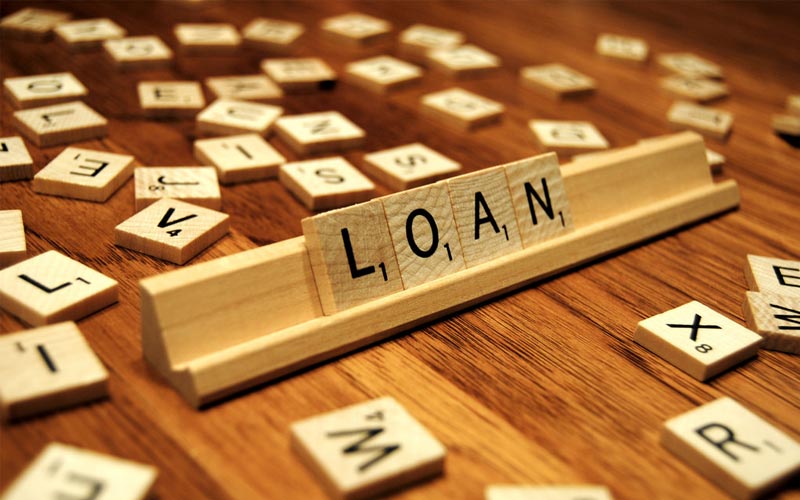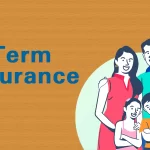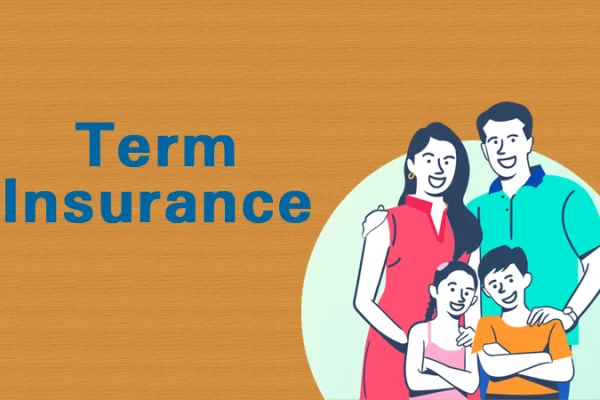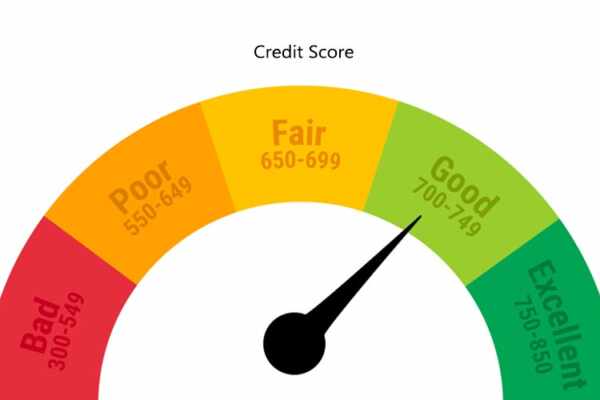When you have decided to pursue higher education, you may need a private or a federal student loan. It is quite natural that a lot of parents cannot support their child’s higher education. So, should you postpone or cancel your dreams to become a surgeon? No. Of course not. You can take a student loan, complete your studies, and then repay. If you do not know much about student loans, then you have come to the right place. Today, we will talk about the difference between subsidized and unsubsidized loans. So, by reading the article, you can determine which loan is perfect for you.
If you choose to go with federal student loans, you must know about subsidized and unsubsidized student loans. Now, both loans are available to undergraduate students. But, there is a huge difference between the two. Direct subsidized loans are provided based on need. This loan does not accumulate interest when a student is in school, even when the loan is deferred after graduation.
On the other hand, direct unsubsidized loan continuously and immediately accumulates interests. Therefore, if you skip any in-school payments, you will face a larger balance than what you had borrowed. Understanding the difference between subsidized and unsubsidized loans is crucial as it will change how your student loan works, how much amount you will repay, and your student loan repayment.
This article has also covered how you can apply for subsidized or unsubsidized loans and how you can repay. You will even know the similarities between the two loans and their interest rates. Therefore, let’s get straight to the point and understand the two federal student loans without wasting any more time. Hence, scroll down.
Table of Contents
What is a direct subsidized loan?
The U.S. government pays interest on your direct subsidized loan while you are enrolled in a school. This is at least half of the time. Moreover, if you have graduated and have put your loan into forbearance or deferment, then Government covers the interest on your loan. While you do not have to pay interest while you are in school, interest begins to accumulate straight away. So, either the interest needs to be paid by someone, or the interest is added to the loan principal.
Below we have listed some of the pros and cons of a direct subsidized loan.
| Direct Subsidized Loans Pros | Direct Subsidized Loans Cons |
|
|
Therefore, if you take a $20,000 loan as a freshman student for your four-year undergraduate course, then four years later, the loan balance will be $20,000. This is because the U.S. government will pay your interests.
Direct subsidized loans are chiefly designed for undergraduate, low-income borrowers. So, as per the Department of Education, your school is going to decide your eligible loan amount. If you qualify for a $10,000 loan, it is your school authorities who are going to decide it. Moreover, the subsidized loan amount cannot exceed financial needs.
| Dependent Undergraduate Student Borrowers Federal Loan Limits | |||
| Direct Subsidized Loans | Direct Unsubsidized Loans | Total | |
| First Year | $3,500 | $2,000 | $5,500 |
| Second Year | $4,500 | $2,000 | $6,500 |
| Third & Fourth Years | $5,500 | $2,000 | $7,500 |
| Overall | $23,000 | $8,000 | $31,000 |
Note: Federal Loan Limits are greater and higher for Graduate and Independent Students.
What is a direct unsubsidized loan?
A direct unsubsidized loan is also a federal loan. Students must complete the Free Application for Student Aid or FAFSA for becoming eligible for this loan. Moreover, the direct unsubsidized loan’s eligibility is not based on financial needs.
So, students are responsible for their unsubsidized loan interests, and they have to pay it even while the loan is in deferment. If you do not have interest payments, then that gets added to your principal amount. Hence, your repayment gets even harder.
The moment the unsubsidized loan is taken out, you are responsible for making the interest payments. If you fail to pay the interests, then it is added to the principal amount. So, suppose you take a $2,000 unsubsidized loan at 2.75% and then decide not to make any in-school payments; your debt will grow to $2,247. Therefore, this is highly advised that you make your interest payments timely. It becomes challenging for students to repay later.
Below we have listed some of the pros and cons of a direct unsubsidized loan.
| Direct Unsubsidized Loans Pros | Direct Unsubsidized Loans Cons |
|
|
Now that we have learned about subsidized and unsubsidized loans, we should learn the difference between subsidized and unsubsidized loans. We have differentiated both the loans in the next heading.
Direct subsidized loan vs. direct unsubsidized loan. What’s the difference?
The U.S. government sets the rate of interest for both subsidized and unsubsidized loans. Moreover, the rates are fixed, and there is no minimum credit score required as such. The amount students can borrow for their education is limited, though. Moreover, students have also to complete the FAFSA to become eligible for loans.
| Subsidized Loans | Unsubsidized Loans | |
| Eligible Students | Undergraduates | Both graduates and undergraduate students |
| Financial Need Required | Yes | No |
| Interests Subsidized During Deferments | Yes | No |
| Borrowing Amount Limits | Lower | Higher |
As you can see in the chart above, only undergraduate students are eligible for subsidized loans. While on the other hand, both undergraduate and graduate students are eligible. Moreover, financial need is required for subsidized loans. Unsubsidized loans do not require to prove financial need as such. Furthermore, the borrowing limits are limited and lower for subsidized loans. But, for unsubsidized loans borrowing amount limit is high. Moreover, the U.S. government will pay interest for subsidized loans. But, for unsubsidized, it is the students who will pay the interests while in school and later after graduation.
Direct subsidized and direct unsubsidized loans have some similarities as well. We have talked about it below.
What are the similarities between subsidized and unsubsidized loans?
Even though subsidized and unsubsidized loans have a lot of differences, they share some similarities as well. We have listed them below.
| Amount Borrowed | Your school will determine the amount you can borrow. After you have submitted all the required documents, the school authorities will provide you with financial aid package details. Hence, explaining to you how much you can take in unsubsidized and subsidized student loans. |
| Loan Fees | Both subsidized and unsubsidized loans have the same fee. The fee charged to the aggregate total is 1.057%. This amount is for loans disbursed after October 2020 and before October 2021. |
| Interest Rates | The current Annual Percentage Rate or APR for an undergraduate unsubsidized and subsidized loan is 2.75%. This is between July 2020 to July 2021, as per the Department of Education. The unsubsidized graduate loan interest rate is 4.30%. |
So, as you can see, even though subsidized and unsubsidized loans have great differences, they have significant similarities. The interest rates, loan fees, and borrowed amounts are similar.
Who are eligible for direct federal loans?
There are specific eligibility criteria you have to qualify for being eligible for direct federal loans. The eligibility criteria are:
- You must be enrolled at least half-time in school. The school also must participate in the Federal Direct Loan Program.
- You must be a U.S. citizen or must be an eligible non-citizen.
- The borrower must have an authentic Social Security Number.
- The student must also maintain satisfactory and acceptable academic progress.
- If you are borrowing a direct federal loan, you must not default on any other federal loans.
- You must have completed a high school diploma or equivalent.
- Males aged 18 to 25 must be registered with the Selective Service System.
Direct subsidized loans are available only to undergraduate students. The students must have demonstrated financial need. Bur, on the other hand, both undergraduate and graduate students can apply for direct unsubsidized loans. For direct unsubsidized loans, there is no financial need required.
If you qualify for a direct subsidized loan, then the Government will pay interest on your loan. The U.S. government will pay your interests at least half the time. Moreover, the Government will also continue paying interest during the six months grace period after leaving school. The Government will pay it even during the deferment period.
Moreover, if you have to apply for any direct federal loans, you have to fill out the FAFSA. The form asks about your assets, income, and even your parents’ assets and income. So, your school will determine which kind of loan you will qualify for by looking at your FAFSA. Hence, your school decides how much you can borrow and whether you are eligible for a direct subsidized or direct unsubsidized loan.
How can you apply for federal student loans?
- Fill out the Free Application for Student Aid or FAFSA. Indicate that you are interested in a Direct Federal Student Loan. This is your loan application.
- After the school receives your FAFSA and other necessary required financial aid forms, your eligibility for loans will be determined.
- You will then receive an email showcasing that your Financial Aid Awards can be viewed on your TreeHouse account. So, you have to log in and then accept your awards.
- Once you have logged in and accepted your awards, then on your TreeHouse account, studentloans.gov will appear. The website will then provide instructions and guide you to electronically fill out your Entrance Interview (we have explained below) and Master Promissory Note. Students have to fill out this form once in 10 years. Hence, you do not have to fill this out while you are at any school. After you are done filling out your Master Promissory Note, you have to continue filling your FAFSA form in the following years. You have to just your awards on your TreeHouse account and receive your Federal Direct loan funds.
- The Department of Education will send your funds to your school’s Student Accounts Office. Then, the funds will get credited to your account.
- After you have received your loan funds and you have a credit in your account, and you are not on any payment plan, then the Student Accounts Office will mail you the check on your account for the credit after you have called them with your request the office will do it in seven to ten days.
Therefore, this is how you can apply for either a subsidized or unsubsidized student loan. Remember, you must attend at least half-time school for qualifying for the loan. Before filling out the FAFSA, make sure you are eligible for all the eligibility criteria listed above.
What is an entrance interview?
When a student borrows a loan from the Federal Direct Loan Program, entrance interviews are conducted. The entrance interview aims to make the student aware and acquaint with the loan’s terms and conditions. Entrance interviews are essential before loan funds are disbursed into the student’s account. If Drew receives the loan funds, but the students fail to complete the entrance interview timely, the loan funds will be returned. Theological, CLA, and Graduate first-time borrower students have to complete an entrance interview regardless of their college year. Students have to fill out the Entrance Interview online at studentloans.gov.
What is the time limit for receiving loans?
If you have borrowed on or after 1st July 2013, there is a time limit for receiving direct subsidized loans on the maximum time period. This time period is measured in academic years. But, this period is not applicable to direct unsubsidized loans. If the time limit applies to you, you will not receive subsidized loans for greater than 150% of your program length. This is known as the “maximum eligibility period.” This maximum eligibility period is based on your current program’s published length. You will find your program’s published length in your school’s catalogue.
Let’s say you have enrolled in a four-year undergraduate program. The maximum period of receiving a direct subsidized loan is 150% of your program length. Hence, that will be 150% of 4 years, i.e., six years. If you are enrolled in a two-year program, the maximum period for receiving a loan is 150% of two years, i.e., three years.
As your maximum period length depends on your program, if you happen to change your program, the length will change. Hence, your maximum eligibility period changes with the program change. Moreover, if you have already received loan funds for the earlier enrolled program, that fund will count towards your new maximum eligibility period.
Direct subsidized loan vs. direct unsubsidized loan repayment: which one should you prioritize?
When you prioritize your loan repayments, you must always first prioritize repaying your direct unsubsidized loan and then your direct subsidized loan. This is because your unsubsidized loan keeps on accumulating interests while you are in school. Hence, your unsubsidized loan’s balance will be quite large. This will not be the scenario if you have already paid your interests while you were in school.
Let’s consider an example now. Say you are an independent student, and you want to borrow the maximum amounts from both the loans, i.e., $5,500 and $7,000 at 2.75%. So, as per our loan calculator, if you do not pay your unsubsidized loan until your grace period, the balance will grow to $288. Then, you have to pay the interest on your total balance of $7,288. But, your subsidized loan will still be $5,500. So, you will pay interest on a lower amount.
You can save your interest by paying the higher amount first, i.e., the direct unsubsidized loans. Moreover, if you repay your unsubsidized loan first, then if you qualify for forbearance or deferment or go back to school, you will not have unsubsidized debt interest to grow.
It makes a huge difference whether or not your interests start accruing while you are in school or not. Or, you may also get a pass until you graduate. You have to keep this in mind while choosing your student loan repayment strategy and becoming debt-free after graduating.
Anyway, it is always advisable to choose a direct subsidized loan when you qualify for direct federal loans. The Government will pay for your interests. Hence, you can save quite a few money. Most of the students go for direct subsidized loans as they do not have to worry about school interests. Therefore, it is always wise to with direct subsidized loans.
Frequently Asked Questions on Direct Subsidized and Unsubsidized Direct Loans
Q.1. For what loan am I eligible? Is it direct subsidized or direct unsubsidized?
If you want to receive any of the loans, you must be enrolled in a half-time school. Moreover, your school must participate in a Direct Loan program. Moreover, it is a must that you are enrolled in a certificate or degree that the school is offering. Direct subsidized loans are available to undergraduate students with financial need. A direct unsubsidized loan is open to undergraduate, graduate, and professional degree students. To receive a direct unsubsidized loan, you will not need any financial need. Hence, if you are an undergraduate student, then receiving a direct subsidized loan is no hard. Moreover, it is your school that will select which loan is correct for you.
Q.2. How do I apply for a loan?
Ans- Applying for a direct federal loan is very lucid. You have to first fill up the Free Application for Student Aid or FAFSA form. You even have to submit certain important documents. Based on your application and documents, your school will decide on your loan amount. Your school will also decide for which loan you are eligible.
Moreover, you will have to also appear for a specific entrance interview. Upon clearing the interview, you will receive your loan funds. We have already explained this in detail above.
Q.3. Is there any other charge on direct federal loans other than interest rate?
Ans- Yes. There is. There is a loan fee for all direct unsubsidized loans and direct subsidized loans. The loan fee is a certain percentage of the loan amount. Moreover, this loan fee is deducted proportionately on every loan disbursement. The rate depends on when the loan was or is first disbursed.
| Direct Subsidized Loans and Direct Unsubsidized Loans Loan Fees | |
| First Disbursement Date | Loan Fee |
| On and after 1st October 2019 and before 1st October 2020 | 1.059% |
| On and after 1st October 2020 and before 1st October 2021 | 1.057% |
Q.4. What are the additional steps I have to take to receive the loan?
If your financial aid package includes direct federal loans, be it direct subsidized or directly unsubsidized, your school or financial institution will tell you how to accept the loan.
If you are a first-time borrower, and receiving the loan for the first time, then you are required to:
- Complete your entrance interview or counselling. This is a tool to make you understand the loan and your obligations to repay it.
- You have to agree to the loan terms by signing the Master Promissory Note.
You must contact your school authorities to know more about the loan and receiving it. Your school authority will help you to know more regarding the loan.
Q.5. When do I have to repay my loan?
Ans- After you have graduated from school or drop school below half-time enrolment, you will have six months grace period. After this grace period gets over, you have to start repaying the loan. During this period, you will keep on receiving repayment information from the loan servicer. Moreover, you will also get information about your first payment due date. Payments are generally monthly due.
Q.6. What kinds of loan repayment plans are available?
Ans- There are various repayment options available designed to meet the borrower’s individual needs. Your loan service provider will make you understand various loan repayment options available to you. In general, you will have about 10 to 25 years to repay your loan. This entirely depends on your loan repayment option. So, if you want to look for repayment options, you must contact your loan service provider.
Q.7. What if I face any trouble in repaying my loan?
Ans- If you are facing trouble in repaying my loan or are unable to make scheduled repayments, then contact your loan service provider immediately. The loan servicer will help you in understanding the options for keeping your loan in good standing. For instance, you may plan on changing your repayment plan or lower the monthly payment. Or, you can even request for forbearance or deferment to temporarily lower or stop the loan payments. So, if you are facing any issues, then contact your loan service provider immediately.
Q.8. Can I cancel my direct federal loan if I don’t need it anymore or need a lesser amount than provided?
Ans- Yes, you can cancel your loan before disbursement. You can cancel your loan entirely or a part of it by notifying your school any time. After your loan is disbursed, you can cancel all or some parts within a stipulated time period. The promissory note and additional information that you will receive from your school will explain to you each and every detail. Moreover, your school authority will also explain the time frames within which you can cancel your loan.
Q.9. Can my loan be discharged or forgiven?
Ans- Yes. Under certain special conditions, your loan may get discharged or altogether cancelled. You may be eligible for entire or some part loan discharge or forgiven (cancelled).
Final Words
Direct subsidized and direct unsubsidized loans are direct federal loans available to students. While direct subsidized loans are available to only undergraduate students, direct unsubsidized loans are available to graduate and undergraduate students. I hope this article helped you understand both the direct federal loans and the difference between subsidized and unsubsidized loans. Therefore, if you are a student looking for a direct subsidized or unsubsidized loan, contact your school authority.











